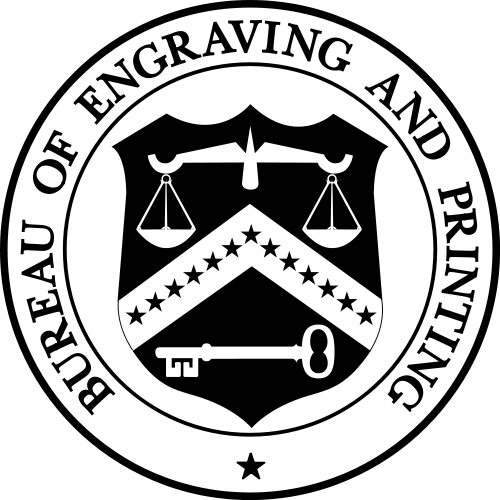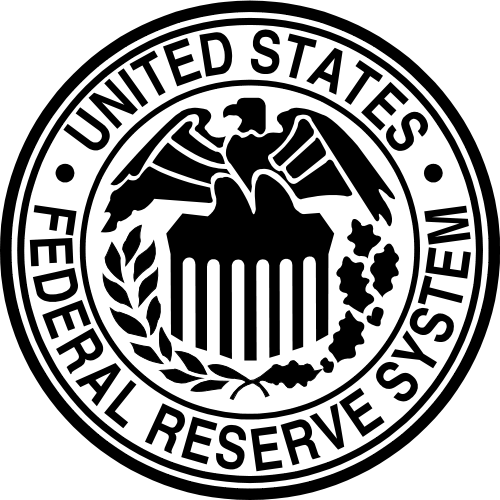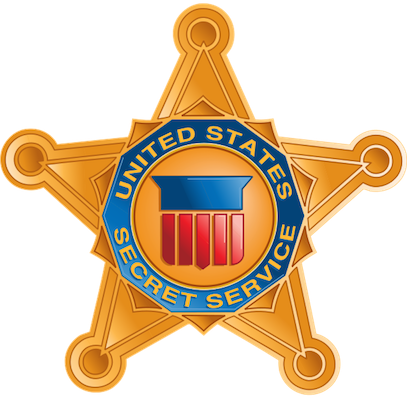Bureau of Engraving and Printing
Federal Reserve
United States Commission of Fine Arts
Citizens Coinage Advisory Committee
Secretary of the Treasury
Treasurer of the United States
United States Secret Service
United States Mint

United States Mint Website: www.usmint.gov
United States Mint Online Catalog: catalog.usmint.gov
Telephone Ordering: (800) USA-MINT (872-6498)
TTY Calling: (888) 321-MINT (6498)
Outside the United States: 001-202-898-6468
United States Mint Headquarters
801 9th Street NW
Washington, DC 20001-4503
- Sales Counter Open Monday-Friday, 10AM – 4PM except for federal holidays
- Call (202) 354-6800 for more information
Unites States Mint Kiosk in Union Station
Closed in June 2013. U.S. Mint products may be purchased at the Bureau of Engraving and Printing headquarters visitors center.
United States Branch Mint at Philadelphia
151 N Independence Mall E
Philadelphia PA 19106-1819
- Tours are available Monday-Friday, 9AM – 3PM except for federal holidays
- Call (215) 408-0112 for more information
United States Branch Mint at Denver
320 W Colfax Ave
Denver, CO 80204-2605
- Tours are available Monday 9AM–l3PM and Tuesday-Friday 8AM–3PM except for federal holidays. The Visitors’ Information and Sales Center is located on Cherokee Street between 14th & Colfax Avenues.
United States Branch Mint at San Francisco
155 Hermann Street
San Francisco, CA 94103
- The Mint at San Francisco mints proof and commemorative coins.
- This branch of the Mint does not offer tours.
United States Branch Mint at West Point
- Located near the US Military Academy, the West Point Mint facility mints all of the American Eagle bullion coins. It is the nation’s silver bullion depository and is nicknamed “The Fort Knox of Silver.”
- Because of security concerns, no public tours are available.
United States Bullion Depository
7743 Gold Vault Road
Fort Knox, Kentucky 40121
- Fort Knox is nation’s gold bullion depository. The U.S. Mint reports that there is 147.3 million ounces of gold on deposit there. Fort Knox is a highly secure and classified facility.
- “No visitors are permitted, and no exceptions are made,” according to the U.S. Mint
Bureau of Engraving and Printing

BEP Website: www.moneyfactory.gov
BEP Online Store: catalog.usmint.gov/shop/currency †
Bureau of Engraving and Printing Headquarters
401 14th Street SW
Washington, DC 20228
- Visitors Center is open Monday through Friday, 8:30 AM-3:30 PM (September-March) and 8:30 AM-7:30 PM (April-August)
Tours:
- Tours are 45-50 minutes and start every 15 minutes.
- Tours line up at the Visitors Center Entrance on 14th Street at C Street.
- Non-Peak Season (September-February), No Tickets Required
- Hours: 9:00 AM – 10:45 AM & 12:30 PM – 2:00 PM
- Peak Season (March-August), Free Tickets Required (obtained in Visitors Center)
- Hours: 9:00 AM–7:00 PM
- Large groups (10 or more) with advance reservations tour 11:00 AM-12:15 PM
For more information call or to schedule a group tour: (202) 874-2330 (local) or (866) 874-2330 (toll-free)
Western Currency Facility
9000 Blue Mound Road
Fort Worth, TX 76131
Tours:
- Tours are on a first come, first served basis.
- Tours are 45 minutes and start every 30 minutes.
Hours:
- Non-Peak Season (August through May): Tour and Visitor Center is open from 8:30 AM to 3:30 PM. Tours are from 9:00 AM to 2:00 PM.
- Peak Season (June & July): Tour and Visitor Center is open from 10:30 AM to 6:30 PM. Tours are from 11:00 AM to 5:00 PM.
For more information call or to schedule a group tour: (817) 231-4000 (local) or (866) 865-1194 (toll-free)
Both facility’s Tours and Visitors Centers are closed on the weekends, federal holidays, and the week between Christmas and New Years Day.
Federal Reserve

Board of Governors:
- Jerome H. Powell, Chair
- Richard H. Clarida, Vice Chairman
- Randal K. Quarles, Vice Chair for Supervision
- Lael Brainard
- Michelle W. Bowman
- 2 seats are vacant
Federal Reserve Website: federalreserve.gov
Federal Reserve Board is located in the Marriner S. Eccles Federal Reserve Board Building located at 20th Street and Constitution Avenue, NW, in Washington, DC.
Tours:
- Prearranged tours may be made of the Eccles Building for groups of 10 or more at least two weeks in advance. Contact Visitor Services at (202) 452-3324 to make reservations.
- The public may visit the Eccles Building to view art exhibitions Monday through Friday from 10:00 AM to 3:30 PM. Reservations are required at least five business days in advance. Contact (202) 452-3778 for more information.
The Federal Reserve is divided into 12 Districts where each bank sets operations parameters for their region. The Federal Reserve officially identifies Districts by number and Federal Reserve Bank city. Serial numbers on currency begin with the corresponding letter of the alphabet to designate the Federal Reserve Bank (e.g., Boston serial numbers begin with an “A”).
- Boston (www.bos.frb.org)
- New York (www.newyorkfed.org)
New York Bank serves the Commonwealth of Puerto Rico and the U.S. Virgin Islands. - Philadelphia (www.philadelphiafed.org)
- Cleveland (www.clevelandfed.org)
- Richmond (www.richmondfed.org)
- Atlanta (www.frbatlanta.org)
- Chicago (www.chicagofed.org)
- St. Louis (www.stlouisfed.org)
- Minneapolis (www.minneapolisfed.org)
- Kansas City (www.kansascityfed.org)
- Dallas (www.dallasfed.org)
- San Francisco (www.frbsf.org)
San Francisco Federal Reserve Bank serves Hawaii, American Samoa, Guam, and the Commonwealth of the Northern Mariana Islands.
Seattle Branch of the San Francisco Federal Reserve Bank serves Alaska.
United States Commission of Fine Arts

Website: www.cfa.gov
CFA maintains offices at the National Building Museum (www.nbm.org)
Chair: Earl A. Powell III
401 F Street NW, Suite 312
Washington, DC 20001-2728
- CFA meetings are held the third Thursday of each month
- CFA Board meetings are held the first Thursday of each month
- No meetings are held in August
- CFA meetings are in Suite 312 of the National Building Museum and are open to the public
Citizens Coinage Advisory Committee

Website: www.ccac.gov
The CCAC can be contacted through the U.S. Mint Headquarters in Washington, DC.
Citizens Coinage Advisory Committee
801 9th Street, NW
Washington, DC 20220
Email address: info@ccac.gov
- Recorded meeting information line: (202) 354-7502
- Meetings are held monthly mainly at the U.S. Mint Headquarters
- Some meetings are held at American Numismatic Association shows and during the ANA Summer Seminar in July
- The U.S. Mint issues press releases announcing when CCAC meetings will occur
Chair: Thomas J. Uram
List of current members can be found on the CCAC’s website.
Secretary of the Treasury

Secretary of the Treasury: Steven T. Mnuchin (77th secretary)
Website: www.treasury.gov
Department of the Treasury
1500 Pennsylvania Avenue, NW
Washington, D.C. 20220
General Information: (202) 622-2000
Treasurer of the United States
Treasurer of the United States: Jovita Carranza (44th Treasurer)
United States Secret Service

Much of the Secret Service’s responsibilities later given to other agencies as their full-time mission. Today, the Secret Service concentrates on financial crimes including investigating currency and security counterfeiting and major financial fraud. It is also the primary agency responsible for the protection of the President, past Presidents, Vice Presidents, presidential candidates, visiting heads of state, and foreign embassies.
The Secret Service was transferred from the Department of Treasury to the newly established Department of Homeland Security on March 1, 2003.
Director: James M. Murray (26th Director)
Website: www.secretservice.gov
245 Murray Ln
Washington, DC 20223
Office of Government and Public Affairs: (202) 406-5708
To find a field office to report counterfeit currency, threats, fraud, and other financial crimes, visit their website at www.secretservice.gov/contact/field-offices
